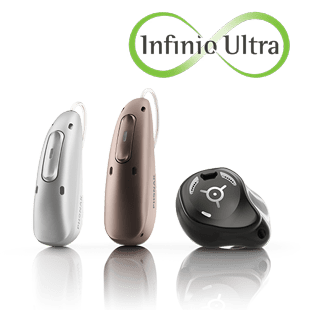
Roger™ at hand, Auracast on the horizon: What audiologists need to know
Understanding the realities of Auracast and the ongoing importance of Roger technology for hearing aid users today.
We’re in an exciting era of hearing technology. Auracast, a new Bluetooth® Low Energy broadcast audio standard designed to stream audio from a transmitter to an unlimited number of nearby receivers such as earbuds, headphones, and hearing aids, is gaining attention as a future-forward solution for streaming audio to multiple listeners in public spaces—a step toward more inclusive accessibility. But for hearing aid users today, it’s still a promise, not a reality.
Let’s explore three key realities around Auracast, and why solutions like Roger remain critical, both now and in the years ahead.
Auracast: Technology-ready, but not market-ready
Auracast shows promise for audio streaming in public spaces, such as museum tours, airport announcements and classroom lectures, broadcasting seamlessly to multiple devices, including hearing aids. But there are still major hurdles to work through:
- Very few hearing devices currently support Auracast, most devices are at best “Auracast-ready”.
- Public venues are yet to have compatible transmitting systems installed, meaning users can’t access these benefits even with an Auracast-compatible receiver.
- Auracast broadcasting standards for assistive listening (IEC 60118-17) will not be finalized until at least 2027.
This lack of infrastructure on both receiver and transmitter, means Auracast is more of a theoretical benefit than a practical one right now. Future-proofing your clients with Auracast-compatible hearing aids may be considered foresight, but if wide adoption takes years, clients may need new hearing aids by then. Some may even need new phones just to use the companion app that manages Auracast connections.
Meanwhile, Roger is already delivering on what Auracast promises. There is no need to wait for a venue to broadcast, but Roger users can essentially bring the broadcasting themselves. Thanks to Roger Unlimited, accessibility to a broadcast stream for Phonak hearing aid users is now easier than ever.
There is also a growing voice across organizations around the world that are advocating for the ongoing availability of telecoils in devices and public spaces for foreseeable future. Telecoil and loop systems are vital to hearing accessibility by people with hearing loss. We need to ensure any new venue that will get Auracast will continue to support telecoil and loop systems already in use today.

Figure 1: Left: Roger Touchscreen Mic | Right: Roger On™ – proven solutions delivering clarity today.
Hardware matters: Remote microphone performance
When it comes to Auracast in remote microphones, it’s important to remember that Auracast is a wireless transmission standard, and not a complete assistive listening system. It doesn’t define how remote microphones work or ensure advanced signal processing for optimized speech-in-noise understanding. This matters, especially for people with hearing loss, who need enhanced speech clarity to follow conversations in real-world settings.
A recent Phonak study1 looked at technical measures of four remote microphone systems, all with broadcasting capabilities (including Auracast).
1. Delay
Roger maintained an audio delay of under 30ms, low enough to preserve lip-sync and avoid annoyance to delayed audio feedback from external voices. Other competing systems using Auracast-compatible protocols had delays of up to 3× longer than Roger.
2. Speech intelligibility
In noisy conditions (70–80 dBA) Roger had the best predicted speech in noise scores, providing better intelligibility than listening from 20cm. This is due to Roger’s adaptive gain feature to keep the signal above the noise. Other systems showed varying and often degraded performance.
3. Audio quality
Using AI-based audio quality estimators, Roger earned top ratings in overall quality and background noise handling, especially in noisy conditions which is where hearing aid users need support the most. Other remote microphone systems had varying degrees of audio quality.
A transmission protocol is only as good as the hardware that carries it. Meaningful benefits come from the system as a whole—hardware, transmission, and processing working together.
Accessibility doesn’t mean usability: The case for education
Auracast envisions use in education, with students walking into classrooms and connecting instantly to a teacher’s mic. A great concept, but the devil lies in the details. Imagine a student with hearing loss needing to connect to the teacher’s Auracast stream. The child walks in the door… but how is the connection managed?
The idea of using an assistant app to select and connect to streams may work for tech-savvy users, but it’s not realistic for many children who may not have access to a smartphone, especially during school hours. Add to this the complication when you consider that a school may have multiple Auracast broadcasting streams that will need constant switching in and out of during the school day. Or situations when there are multiple teachers talking at once. Even if the child has access to a smartphone, what is stopping them from switching off and listening to a neighbouring classroom?
Auracast was built to serve a broad set of use cases, meaning usability isn’t optimized for children or school settings. Compare this with the Roger for Education ecosystem, which is built specifically for the pediatric population.
- Connection is automatic, secure, with minimal effort from the user thanks to systems like the Roger WallPilot.
- Education-specific features such as Multitalker network, soundfield compatibility, and list devices.
- No apps, no mystery menus, no waiting for adoption, just guaranteed performance.
Looking ahead, staying grounded
It’s always tempting to chase the newest technology, but audiology is about meeting our clients’ needs today. Auracast has potential, but for now, it’s not fully accessible or widely supported. Waiting for adoption means patients may miss out on alternatives they could benefit from today.
Phonak’s commitment to supporting stable, proven standards like Bluetooth Classic, while continuing to lead in broadcasting systems like Roger, prioritizes the present without losing sight of the future. We’re not resisting innovation, but we’re ensuring clients aren’t paying the price of premature adoption.
Because while tomorrow’s tech is exciting, our clients are living and hearing today.
Explore the full Phonak Insight on this topic, and more evidence-based research, on the Phonak Evidence page.
References
- Roh, M., Dubach, M., Utiger, M., & Harsh S. (2025). Beyond wireless protocols: Roger’s excellence in Remote microphone performance. Phonak Insight, retrieved September 2025.
